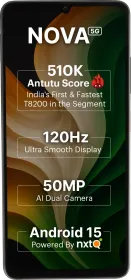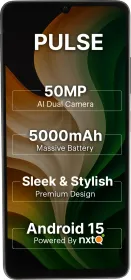TL; DR
- According to Google, the AI Mode offers advanced reasoning and multimodality, along with the ability to conduct thorough research and follow up with follow-up questions.
- Users can also ask follow-up questions based on the ongoing conversation, and the AI Mode will respond with full context.
- I spent approximately 30 minutes using Google AI Mode while writing this article, during which the tool responded with well-formatted answers to my queries about the ongoing Iran-Israel conflict and the rise in the Indian stock market.
After testing it in the United States, Alphabet-owned search giant Google released its Perplexity AI rival in India on Tuesday: AI Mode. Called Google’s “most powerful AI search experience yet,” the AI Mode essentially combines Google Search’s vast directory of information with Gemini’s ability to process and organize it in an easy-to-understand and efficient manner.
How Does Google AI Mode Work?

According to Google, the AI Mode offers advanced reasoning and multimodality, along with the ability to conduct thorough research and follow up with follow-up questions.
The AI Mode first breaks down your query into smaller sub-queries (what the company refers to as the fan-out technique), initiates multiple Google searches for those queries, accesses information from dozens of websites across the internet, and then summarizes the most relevant information that matches the questions.
Users can also ask follow-up questions based on the ongoing conversation, and the AI Mode will respond with full context. What’s more interesting is that the tool can handle various types of inputs, including multimodal inputs such as text, voice, and images, resulting in a more natural and convenient search experience.
Also Read: Google Gemini Will Now Be Available on Smartwatches, Smart TVs, Cars & More
Google’s AI Mode Uses A Custom Version Of Gemini 2.5 LLM
To facilitate the advanced Search experience, Google has incorporated a custom version of its Gemini 2.5 large language model, which allows users to ask longer, more complex, or nuanced questions that typically require multiple searches. The company also points out that early testers of the Google AI Mode are asking 2-3x longer queries than what we typically type in Google Search.
There were a few instances when the tool simply returned web pages listed on Google (though with the relevant keywords and topics), but asking it to explain the response helped it get back on track to providing answers instead of web pages.
Our Experience With Google AI Mode: How To Enable And Use?



Given that the Google AI Mode is currently in development, it is available as an experimental tool via Search Labs.
- To enable Google AI Mode for your Google account, head to Search Labs.
- Then, look for the option titled “AI Mode” and tap on the toggle beside its name.
- Then, tap on “Try AI Mode,” which will redirect you to the AI Mode interface (which looks a lot like Perplexity AI’s interface at an initial glance).
- For all subsequent Google searches, you’ll see the “AI Mode” option in the menu bar that contains options like Images, Videos, News, etc. The tool is available in the mobile app.
I spent approximately 30 minutes using Google AI Mode while writing this article, during which the tool responded with well-formatted answers to my queries about the ongoing Iran-Israel conflict and the rise in the Indian stock market. For both queries, the tool accessed hundreds of websites (combined) and provided a summary of what’s available on the internet, along with a few relevant sources (as clickable links).
Also Read: Google’s Latest AI Principles Rewrite Is A Bit Concerning: Here’s Why
Google AI Mode Vs. Perplexity AI: What’s The Difference?


Both Google AI Mode and Perplexity AI utilize a conversational interface, allowing users to ask questions in natural language and receive AI-generated responses based on the information available on the internet. In fact, the release of AI Mode in one of Google’s key markets could be a response to the rising adoption rate of AI-based tools like Perplexity AI and ChatGPT.
Similarities


- Both AI tools generate summarized answers along with a list of relevant links for easy access to the original sources.
- You can ask follow-up questions, and the tools will respond with context.
- Both tools support multimodal search queries.
Differences

- While both tools have access to real-time information, Google’s AI Mode works in tandem with Google Search. The deep integration in Google’s systems, including the ever-growing Knowledge Graph, along with the shopping and location data, could be a significant advantage.
- Perplexity AI’s interface still looks a bit more refined, and Google has already introduced ads in its AI Mode.
- For my queries, Perplexity AI consistently provided a more comprehensive breakdown of the query. For instance, it summarized the developments in the Iran-Israel conflict in the form of a table with the dates and the corresponding events. Further, it also provided me with a list of related questions (with the option to follow up with them).
Also Read: Samsung Has An Apple-Sized Problem In Acquiring Perplexity AI: What’s Going On?
Moreover, the Google AI Mode is the company’s attempt to maintain its dominance in the search market. The company appears to have adapted to users’ demands by creating a new product from its existing offerings, and it works just fine. I wouldn’t mind using the Google AI Mode for my day-to-day tasks.
You can follow Smartprix on Twitter, Facebook, Instagram, and Google News. Visit smartprix.com for the latest tech and auto news, reviews, and guides.


































